This week’s Marvel Rundown features the debut of a pair of female-fronted miniseries! First up, Gwen Stacy takes the spotlight in a solo miniseries that finds Gwen in high school, pre-her first meeting with Peter Parker. Does Gwen Stacy #1 begin to add new depth to the cult-favorite character?
Then, Nebula spins out of the Guardians of the Galaxy and into a solo story that takes her to the far reaches of the cosmic Marvel U. Will she survive the experience?
We’ve got discussion and reviews of both of those titles, plus a Rapid Rundown of other new Marvel titles for the week, all ahead in the latest installment of The Marvel Rundown!
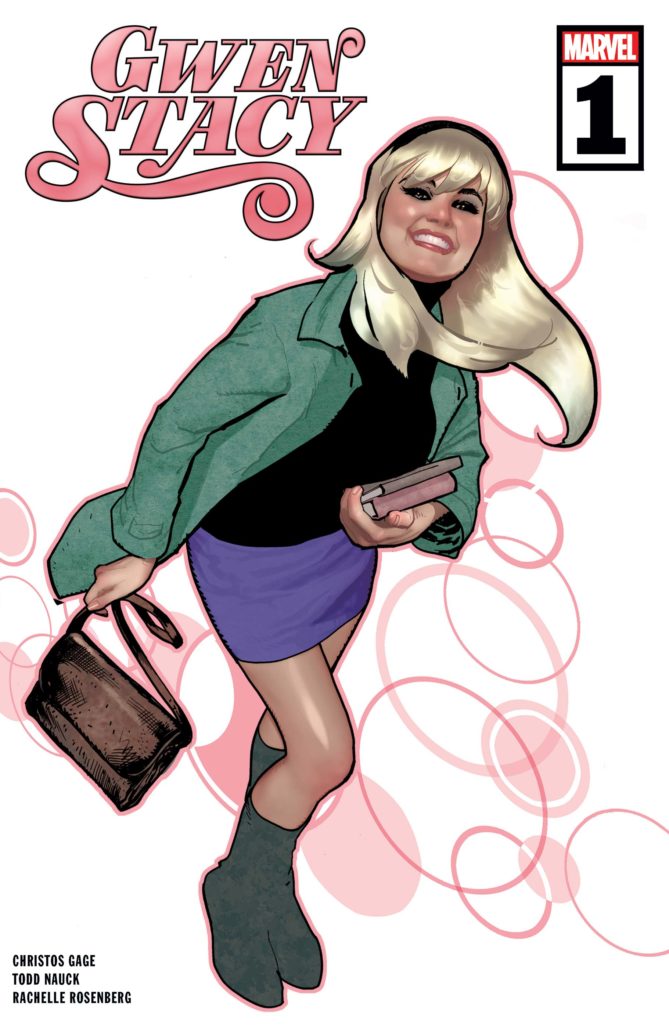
Gwen Stacy #1
Written by Christos Gage
Illustrated by Todd Nauck
Colored by Rachelle Rosenberg
Lettered by VC’s Joe Caramagna
Cover by Adam Hughes
Joe Grunenwald: Marvel’s heading back in time to explore the past of one of its fan-favorite characters, Gwen Stacy! Team, what did you think of the first issue of Gwen’s first ever headlining miniseries?
Hussein Wasiti: I had a pretty tepid reaction to this one. I understand the sentiment of trying to set Gwen Stacy apart from being known primarily as Peter Parker’s girlfriend, but I feel like that was done very well with the Spider-Gwen character. So ultimately I don’t know what this is and who it’s for.
Chloe Maveal: I’m in the same boat that you are, Hussein. This book sort of fell flat for me because…well, if I’m being honest, this just seems to me like another attempt to let the women of Peter’s life be someone other than Peter’s Girlfriendtm and instead just end up making a vapid attempt at a bigger story for the characters. It almost feels forced. For all intents and purposes, Gwen Stacy as herself and not Spider-Gwen died almost 40+ years ago. What’s the purpose of trying to make that a THING again?
Grunenwald: She’s valuable IP that’s just waiting to be mined! It’s true, though: Gwen Stacy, this version of her, has been dead for decades. Still, I know there’s something about the character that’s always sort of fascinated me, I think because she was long gone by the time I got into comics. I know she definitely has a cult following.
As for this first issue, I liken it to the mid-’00s Mary Jane minis and Spider-Man Loves Mary Jane series. Where those titles kept the scale of things relatively small for MJ, though, this book seems intent on raising the stakes for Gwen, which I’m just not sure worked for me. It left me, like you two, wondering who this book is actually for.
Wasiti: I feel like there’s a line between empowering a character while shedding some new light on her that may have been previously unexplored, and putting together a contrived plot for a five-issue miniseries. By the end of this issue we’ve got high school students ready to take on a murderous mob. Whatever humanity that connected me to the characters at the beginning of the issue has evaporated and I’m just left grasping for anything to hold onto.
Maveal: Basically. I understand the desire to empower these female characters that often get swept to the side..but for lack of a better way of putting it — this ain’t it. I hear what you’re saying about the early 00’s books though, Joe. I actually thought of those when looking at the art for this first issue because holy cats, it genuinely screams “Marvel’s weird westernized anime” style of the early aughts.
Wasiti: I feel like we wouldn’t have gotten this book if it were not for the popularization of the character due to Spider-Gwen. Maybe even Gwen-Pool. And that this might just be an attempt to bridge the two versions of the character together to provide a more consistent “strong character” thread between them. Which, by the way, is made all the more moot due to the overt references of Peter Parker and Uncle Ben.
Grunenwald: I think Todd Nauck is a fine artist, and his work here definitely feels like a throwback, though I’m not sure if it quite throws it back far enough, if that makes sense. The references to Peter and Uncle Ben were clever, but they again lead me to the question of who this comic is for. It features a trio of relatively deep-cut villains who the script never identifies outright beyond giving the implication that they’re not nice people. It’s clearly tied to a very specific moment in Marvel history, and it’s littered with easter eggs pointing to that fact. And then in the back of the issue there’s paper dolls? It just felt all over the place in terms of who the target audience is for this.
Wasiti: You’re right, I think a more era-appropriate artist would have worked better. Nauck is great but he wasn’t the greatest fit. Despite my feelings for the story I think Christos Gage framed the relationship between Gwen and her father pretty well. It’s made all the more tragic since both of them are now dead, so I think Gage taps into a very specific emotional core with their relationship.
Grunenwald: That relationship between Gwen and George Stacy was definitely the strongest element of the book. I actually do like the idea of the criminal element threatening to use Gwen to get at her father. I’ve not read a ton of older Spidey comics but that idea feels fresh to me, though the part that doesn’t work for me is that it places Gwen into a passive role. Honestly if this book had just been about Gwen running for student council president I would’ve been happy.
Maveal: Pretty much. The book could have been made a lot more enjoyable by just keeping it simple with Gwen’s school aspirations. Hell, that’d make a great story for younger audiences especially, who are once again making up a big slice of Marvel’s readership.
Wasiti: Did you guys read the back-up stories?
Grunenwald: I did. I thought the “Gwen Stacy, Kid Cop” story by Sean Ryan & Gustavo Duarte was really cute and fun. The other one- and two-pagers left me really cold, though. It was like tonal whiplash reading “Kid Cop” and then the other two.
Wasiti: I really liked the first one, it was concise and adorable. The others were… well, whiplash is a good way to describe them. For a while I couldn’t believe what I was reading. The fact that they were alternate Gwen stories again leads me to ask who this book is for! Editor Nick Lowe even acknowledges readers who might be reading this thinking it’s a Spider-Gwen story in his letter after the main story.
Maveal: It all really comes down to the unanimous idea that this book doesn’t know who it’s for. That’s what continues to bring me back to idea of why this a thing again if you don’t have a proper aim in mind for the character that does actually have a good history to put some depth to; even if that means drawing even further from the stuff from way back when. That’s the brunt of it. The hint of depth was there, but I was really aching for more.
Grunenwald: Are we ready to render our verdicts?
Wasiti: I think we all agree that we have no idea who’d be interested in reading this. I’m giving this a SKIP. It’s an alright read but my distaste for it grew and grew throughout this conversation. I really think people should be spending time and money on other comics.
Maveal: Seconded. I give this a pretty strong SKIP. As much as I want to see more stories for characters like Gwen Stacy given some weight and depth, this first issue brought the big name coupled with a muddle of generic content. It’s a shame.
Grunenwald: It’s a SKIP for me as well. I wanted to like this book, as I do have interest in Gwen as a character, but after this first issue it seems like the series is trying to be too many things for too many people, and ends up being not enough of any of them.
Final Verdict: It’s a rough go for Gwen Stacy #1 as the Rundown crew gives the issue a unanimous SKIP!

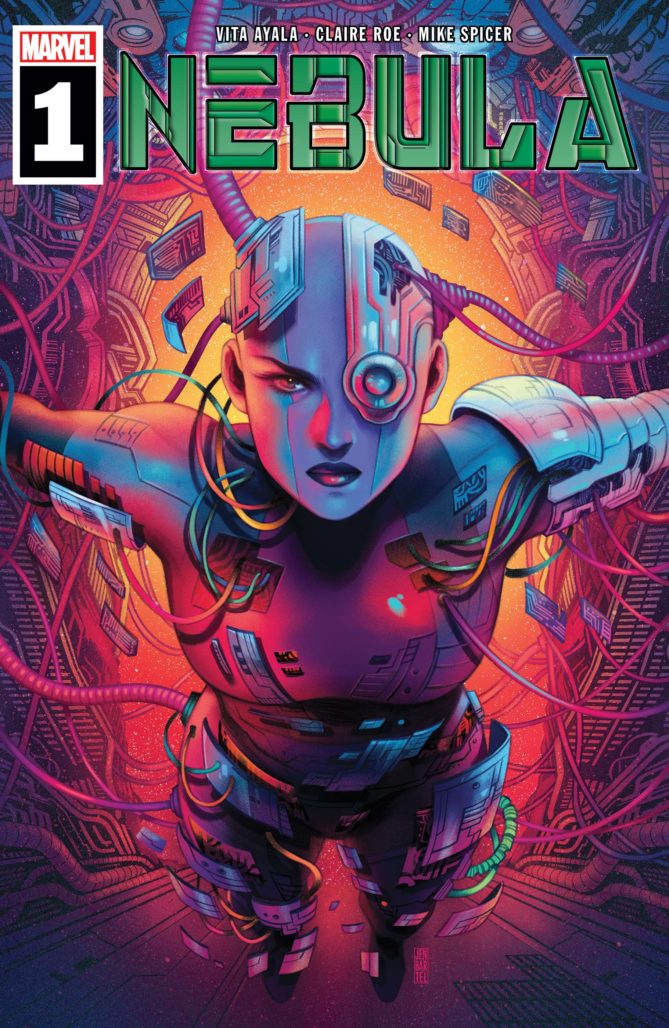
Nebula #1
Written by Vita Ayala
Illustrated by Claire Roe
Colored by Mike Spicer
Lettered by VC’s Travis Lanham
Cover by Jen Bartel
Reviewed by Samantha Puc
Vita Ayala has a knack for writing complex characters, and their take on Nebula is a paradigm example of their skill.
In the debut issue of this solo title, Thanos’ least-favored daughter goes tearing across the universe on a killing spree that lands her on the doorstep of a scientist with a device she wants: one that examines potential actions and their outcomes, which would be very useful for a supervillain. Power-hungry, Nebula demands that he integrate the device in her cybernetics, and complications arise immediately. Hindsight is always 20/20, but Nebula has places to be, people to kill… and no idea that her journey is about to get incredibly high stakes, incredibly fast.
Nebula #1 jumps right into the action and establishes the central conflict immediately. Through well-paced dialogue and action sequences, Ayala and artist Claire Roe establish what Nebula wants, why she wants it, what she’ll do to get it, and what happens once she has it. The issue also introduces a potentially major obstacle for the eponymous character, as well as a potential ally. It grabs you by the throat and drops you into the fray, hardly giving you time to catch your breath before it takes off at a sprint toward a gasp-worthy conclusion.
Basically: this issue absolutely kicks ass. Even if readers only have a passing familiarity with Nebula based on Karen Gillan‘s part in the MCU, it’s easy to get into this issue and understand what’s going on. This is a super strong #1 that does all the things a debut should, without relying on unnecessary exposition or references to past events with which the reader may not be familiar. Going into this issue cold is easy, which is something more #1s should be able to boast (but often can’t).
In addition to fabulous work by Ayala and Roe, colorist Mike Spicer does excellent work establishing the lens through which each panel is seen, and the characters and scenery are super distinct. Travis Lanham always does a phenomenal job on letters, and the emphasis employed in these pages is super well-rendered.
Final Verdict: BUY! Nebula #1 is all the things a debut issue should be, and it’s a strong start from an excellent creative team that surely introduces more greatness to come.

Rapid Rundown!
- Excalibur #7
- Tini Howard and guest artist Wilton Santos kick off a new arc; Captain Britain and Excalibur clean up the Otherworld’s mess as some magical creatures are on the loose. Betsy is also dealing with her brother Jamie’s new role as king of Avalon, which she isn’t happy with at all. Especially since he’s already let the whole thing get to his head. Following the conclusion of the first arc, I was concerned that there might not be much to this story but Howard drops a few hints here and there as to where the story may go… and I’m pretty hooked. In the meantime, this was an alright start. I’m just hoping for whatever’s coming to come quick. — HW
- Star Wars: Rise of Kylo Ren #3
- Ben Solo’s turn to the Dark Side is nearly complete. In this issue, Ben essentially pitches himself to the Knights of Ren and does so by talking about the Jedi he had to fight in order to escape. It’s framed nicely, shedding some real, human cost onto Ben’s decision to abandon his training and destroy Luke’s training grounds. I do think that this series is a lot less explorative than I initially thought, so there’s some disappointment bubbling underneath each issue since the first. With one issue left to go, I’m really not sure that Charles Soule and Will Sliney will be able to wrap the story up satisfyingly. — HW
- X-Men #6
- One of the many fascinating aspects of the ‘Moira X’ reveal during House of X was the implications of what that meant for Destiny, and what the resurrection of that character might mean for the entire Krakoan experiment. This week Jonathan Hickman and guest-artist Matteo Buffagni examine that thread from the perspective of Destiny’s wife, Mystique, in a story that revisits events from House of X and provides more context for what Mystique is up to now, and what she might get up to in the future. It’s a powerful story that sets up some truly intriguing elements for future stories. Not a great jumping-on point, but definitely a great addition to the larger ongoing story. — JG
Next week, the best there is at what he does once again flies solo in Wolverine #1!


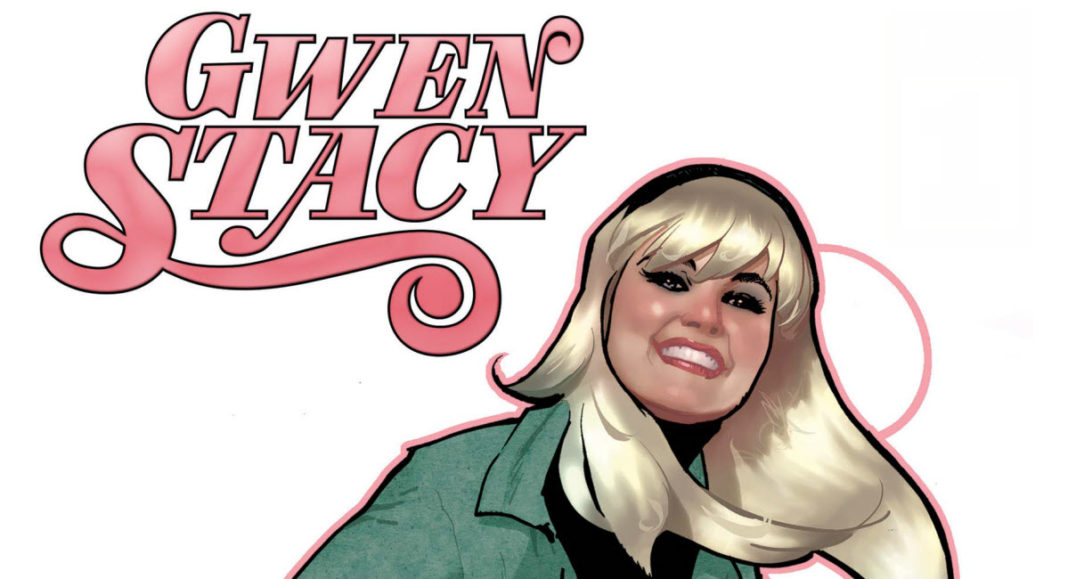
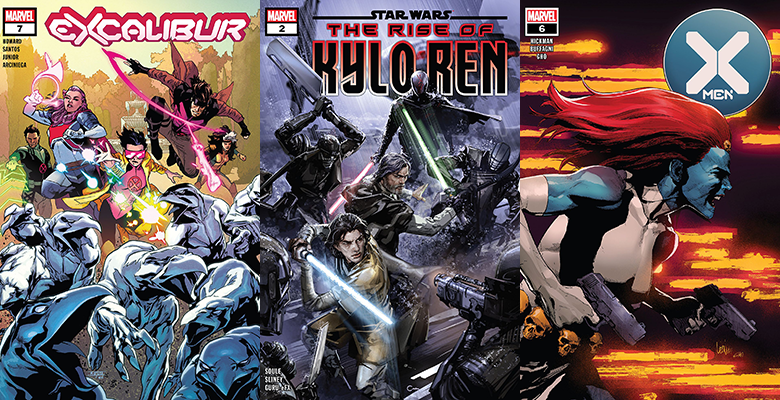

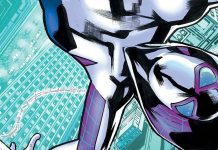




Is this set in the late ’60s or early ’70s? The panel you reproduced looks so generic, it’s hard to tell.
I’m 48 years old and Gwen Stacy was DEAD before I ever started reading Spider-Man comics.
Mike
I’m 60 and I remember when Gwen died. But how many of Marvel’s current readers know or care about her?
I have to wonder if this is just a way to keep a character under copyright.
Comments are closed.